
Keywords: modelling

|
Modeling the Impact of Migration on Mosquito Population SuppressionM. Huang and J. Yu, Qualitative Theory of Dynamical Systems, 22:134. 2023.
The Wolbachia-induced incompatible insect technique is a promising strategy for controlling wild mosquito populations. However, recent experimental studies have shown that mosquito migration into target areas dilutes the strategy’s effectiveness. In this work, we formulate a ... Keywords: gene drive synthetic, homing endonuclease, modelling, reversal drive, risk |
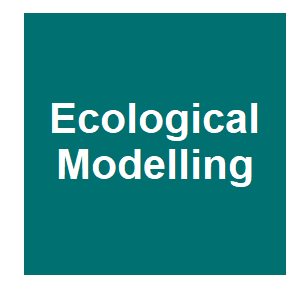
|
Review of gene drive modelling and implications for risk assessment of gene drive organismsJ. L. Frieß, C. R. Lalyer, B. Giese, S. Simon and M. Otto, Ecological Modelling, 478:110285. 2023.
Synthetic gene drive (GD) systems constitute a form of novel invasive environmental biotechnology with far-reaching consequences beyond those of other known genetically modified organisms (GMOs). During the last 10 years, the development of GD systems has been closely linked to ... Keywords: gene drive synthetic, homing endonuclease, modelling, reversal drive, risk |

|
Performance characteristics allow for confinement of a CRISPR toxin-antidote gene drive designed for population suppressionS. Zhang and J. Champer, bioRxiv, 2022.12.13.520356. 2022.
Gene drives alleles that can bias their own inheritance are a promising way to engineer populations for control of disease vectors, invasive species, and agricultural pests. Recent advancements in the field have yielded successful examples of powerful suppression type drives and ... Keywords: gene drive synthetic, homing endonuclease, modelling, reversal drive, risk |

|
Tolerance-conferring defensive symbionts and the evolution of parasite virulenceC. A. Smith and B. Ashby, bioRxiv, 2022.
Defensive symbionts in the host microbiome can confer protection from infection or reduce the harms of being infected by a parasite. Defensive symbionts are therefore promising agents of biocontrol that could be used to control or ameliorate the impact of infectious diseases. ... Keywords: gene drive synthetic, homing endonuclease, modelling, reversal drive, risk |

|
Making waves: Comparative analysis of gene drive spread characteristics in a continuous space modelM. Pan and J. Champer, bioRxiv, 2022.11.01.514650. 2022.
With their ability to rapidly increase in frequency, gene drives can be used to modify or suppress target populations after an initial release of drive-containing individuals. Recent advances in this field have revealed many possibilities for different types of drives, and ... Keywords: gene drive synthetic, homing endonuclease, modelling, reversal drive, risk |

|
Modeling the efficacy of CRISPR gene drive for snail immunity on schistosomiasis controlR. E. Grewelle, J. Perez-Saez, J. Tycko, E. K. O. Namigai, C. G. Rickards and G. A. De Leo, PLOS Neglected Tropical Diseases, 16:e0010894. 2022.
CRISPR gene drives could revolutionize the control of infectious diseases by accelerating the spread of engineered traits that limit parasite transmission in wild populations. Gene drive technology in mollusks has received little attention despite the role of freshwater snails as ... Keywords: gene drive synthetic, homing endonuclease, modelling, reversal drive, risk |

|
Recommendations for environmental risk assessment of gene drive applications for malaria vector controlJ. B. Connolly, J. D. Mumford, D. C. M. Glandorf, S. Hartley, O. T. Lewis, S. W. Evans, G. Turner, C. Beech, N. Sykes, M. B. Coulibaly, J. Romeis, J. L. Teem, W. Tonui, B. Lovett, A. Mankad, A. Mnzava, S. Fuchs, T. D. Hackett, W. G. Landis, J. M. Marshall, Malar J, 21:152. 2022.
Building on an exercise that identified potential harms from simulated investigational releases of a population suppression gene drive for malaria vector control, a series of online workshops identified nine recommendations to advance future environmental risk assessment of gene ... Keywords: gene drive synthetic, homing endonuclease, modelling, reversal drive, risk |
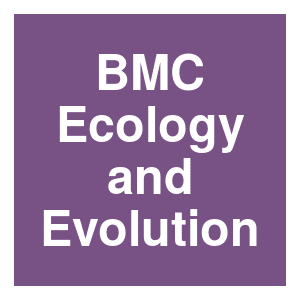
|
A common gene drive language eases regulatory process and eco-evolutionary extensionsP. Verma, R. G. Reeves and C. S. Gokhale, BMC Ecology and Evolution, 21:156. 2021.
Synthetic gene drive technologies aim to spread transgenic constructs into wild populations even when they impose organismal fitness disadvantages. The extraordinary diversity of plausible drive mechanisms and the range of selective parameters they may encounter makes it very ... Keywords: gene drive synthetic, homing endonuclease, modelling, reversal drive, risk |

|
Risk management recommendations for environmental releases of gene drive modified insectsY. Devos, J. D. Mumford, M. B. Bonsall, D. C. M. Glandorf and H. D. Quemada, Biotechnology Advances, 2021.
The ability to engineer gene drives (genetic elements that bias their own inheritance) has sparked enthusiasm and concerns. Engineered gene drives could potentially be used to address long-standing challenges in the control of insect disease vectors, agricultural pests and ... Keywords: gene drive synthetic, homing endonuclease, modelling, reversal drive, risk |
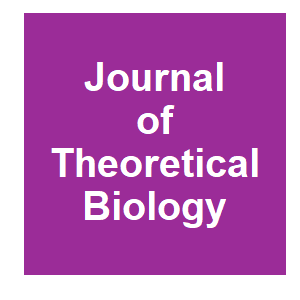
|
Autocatalytic-protection for an unknown locus CRISPR-Cas countermeasure for undesired mutagenic chain reactionsE. Schonfeld, E. Schonfeld and D. Schonfeld, Journal of Theoretical Biology, 528:110831. 2021.
The mutagenic chain reaction (MCR) is a genetic tool to use a CRISPR–Cas construct to introduce a homing endonuclease, allowing gene drive to influence whole populations in a minimal number of generations (Esvelt et al., 2014, Gantz and Bier, 2015, Gantz and Bier, 2016). The ... Keywords: gene drive synthetic, homing endonuclease, modelling, reversal drive, risk |

|
Part of ‘master plan’: Researchers receive grant to fund research on malariaL. Huang, The Daily Californian, 2021.
Early this month, The Marshall Lab at UC Berkeley received an $800,000 grant from the Bill and Melinda Gates Foundation to fund its research on genetics-based malaria mosquito control. The Marshall Lab is one of many teams playing a part in the Gates Foundation’s decades-long ... Keywords: gene drive synthetic, homing endonuclease, modelling, reversal drive, risk |

|
Marshall Lab receives Gates grant for genetics-based malaria mosquito controlBerkeley Public Health, Berkeley Public Health, 2021.
Berkeley Public Health Associate Professor John Marshall, PhD, and Assistant Project Scientist Héctor Sánchez, PhD, have received an $800,000 grant from the Bill & Melinda Gates Foundation to support their lab’s work in genetics-based malaria mosquito control. Malaria, the ... Keywords: gene drive synthetic, homing endonuclease, modelling, reversal drive, risk |
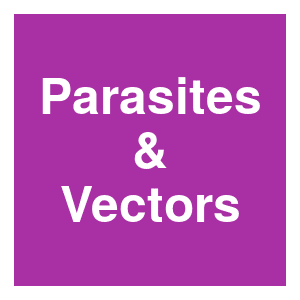
|
Fine-scale estimation of key life-history parameters of malaria vectors: implications for next-generation vector control technologiesA. L. Morris, A. Ghani and N. Ferguson, Parasites and Vectors, 14:311. 2021.
Mosquito control has the potential to significantly reduce malaria burden on a region, but to influence public health policy must also show cost-effectiveness. Gaps in our knowledge of mosquito population dynamics mean that mathematical modelling of vector control interventions ... Keywords: gene drive synthetic, homing endonuclease, modelling, reversal drive, risk |

|
Double drives and private alleles for localised population genetic controlK. Willis and A. Burt, PLOS Genetics, 17. 2021.
ynthetic gene drive systems that are able to spread though populations because they are inherited at a greater-than-Mendelian rate have the potential to form the basis for new, highly efficient pest control measures. The most efficient such strategies use natural gene flow to ... Keywords: gene drive synthetic, homing endonuclease, modelling, reversal drive, risk |

|
Designing gene drives to limit spillover to non-target populationsG. Greenbaum, M. W. Feldman, N. A. Rosenberg and J. Kim, PLOS Genetics, 17:e1009278. 2021.
We develop mathematical models of gene-drive dynamics that incorporate migration between a target and non-target populations to investigate the possibility of effectively applying a gene drive in the target population while limiting its spillovers to the non-target population ... Keywords: gene drive synthetic, homing endonuclease, modelling, reversal drive, risk |
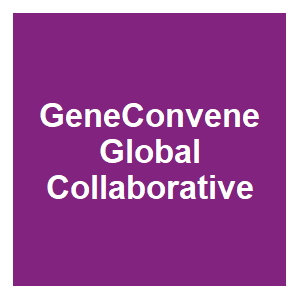
|
Ecological Modeling in Risk Assessment of Gene DrivesHector Quemada and David O'Brochta, , 2021.
Unlike non-gene drive organisms, which can be limited in time and space and therefore provide data in small scale tests that can be relevant to large scale releases, the potential for large-scale spread from a limited release, even in well-isolated trials, means that reliance on ... Keywords: gene drive synthetic, homing endonuclease, modelling, reversal drive, risk |

|
GeneConvene Webinar Series on: Ecological Modeling in Risk Assessment of Gene DrivesHector Quemada and David O'Brochta, , 2021.
Unlike non-gene drive organisms, which can be limited in time and space and therefore provide data in small scale tests that can be relevant to large scale releases, the potential for large-scale spread from a limited release, even in well-isolated trials, means that reliance on ... Keywords: gene drive synthetic, homing endonuclease, modelling, reversal drive, risk |
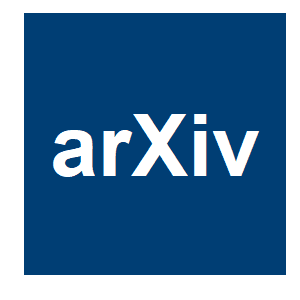
|
Demographic feedbacks can hamper the spatial spread of a gene driveL. Girardin and F. Débarre, arXiv, 2021.
Our results indicate that taking into account the interplay between population dynamics and population genetics might actually be crucial, as it can effectively reverse the direction of the invasion and lead to failure. Our findings can be extended to other bistable systems, such ... Keywords: gene drive synthetic, homing endonuclease, modelling, reversal drive, risk |

|
Double drives and private alleles for localised population genetic controlK. Willis and A. Burt, bioRxiv, 2021.01.08.425856. 2021.
In this paper we propose and model a series of low threshold double drive designs for population suppression, each consisting of two constructs, one imposing a reproductive load on the population and the other inserted into a differentiated locus and controlling the drive of the ... Keywords: gene drive synthetic, homing endonuclease, modelling, reversal drive, risk |

|
Self-Deleting Genes Project To Tackle Mosquito-Borne DiseasesD. Ozdemir, INTERESTING ENGINEERING, 2021.
Did you know that mosquitoes kill at least 725,000 persons every year? They truly are one of the world's deadliest animals which is the reason why scientists from all around are trying to find new ways of dealing with them. Controlling mosquito populations and preventing them ... Keywords: gene drive synthetic, homing endonuclease, modelling, reversal drive, risk |

|
Suppression gene drive in continuous space can result in unstable persistence of both drive and wild-type allelesJ. Champer, I. K. Kim, S. E. Champer, A. G. Clark and P. W. Messer, Mol Ecol, 2021.
Using spatially explicit simulations, we show that the release of a suppression drive can result in what we term "chasing" dynamics, in which wild-type individuals recolonize areas where the drive locally eliminated the population. Despite the drive subsequently reconquering ... Keywords: gene drive synthetic, homing endonuclease, modelling, reversal drive, risk |

|
Self-deleting genes promise risk-free genetic engineering of mosquitoesD. Quick, New Atlas, 2020.
A new project by Texas A&M AgriLife Research is looking to enable "test runs" of genetic changes to mosquitoes that are automatically deleted. Various angles of attack using genetic engineering to combat mosquitoes have been pursued in recent years, including modifying them so ... Keywords: gene drive synthetic, homing endonuclease, modelling, reversal drive, risk |

|
Self-deleting genes to be tested as part of mosquito population control conceptB. Hays, UPI, 2020.
Scientists at Texas A&M have developed a new technique for altering the genes of mosquitoes -- the new technology will cause genetic changes to self-delete from the mosquitoes' genome. Thanks to the breakthrough, described Monday in the Philosophical Transactions of the Royal ... Keywords: gene drive synthetic, homing endonuclease, modelling, reversal drive, risk |

|
$3.9M project on self-deleting genes takes aim at mosquito-borne diseasesO. Kuchment, AGRILIFE Today, 2020.
To control mosquito populations and prevent them from transmitting diseases such as malaria, many researchers are pursuing strategies in mosquito genetic engineering. A new Texas A&M AgriLife Research project aims to enable temporary “test runs” of proposed genetic changes in ... Keywords: gene drive synthetic, homing endonuclease, modelling, reversal drive, risk |

|
Self-deleting genes tested as part of the concept of mosquito population controlcharlottelarson, NEWYORK NEWS TIMES, 2020.
Most genetic engineering strategies designed to control mosquito populations, and their ability to spread diseases such as malaria, require gene editing to be combined with gene drives. Gene drives allow altered DNA to spread rapidly throughout the population. Keywords: gene drive synthetic, homing endonuclease, modelling, reversal drive, risk |

|
Evading resistance to gene drivesR. Gomulkiewicz, M. L. Thies and J. J. Bull, bioRxiv, 2020.08.27.270611. 2020.
Our analyses suggest that among gene drives that cause moderate suppression, toxin-antidote systems are less apt to select for resistance than homing drives. Single drives of moderate effect might cause only moderate population suppression, but multiple drives (perhaps delivered ... Keywords: gene drive synthetic, homing endonuclease, modelling, reversal drive, risk |
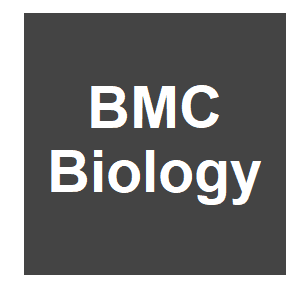
|
Modelling the Wolbachia incompatible insect technique: strategies for effective mosquito population eliminationD. E. Pagendam, B. J. Trewin, N. Snoad, S. A. Ritchie, A. A. Hoffmann, K. M. Staunton, C. Paton and N. Beebe, BMC Biology, 18:13. 2020.
We introduce a simple Markov population process model for studying mosquito populations subjected to a Wolbachia-IIT programme which exhibit an unstable equilibrium threshold. The model is used to study, in silico, scenarios that are likely to yield a successful elimination ... Keywords: gene drive synthetic, homing endonuclease, modelling, reversal drive, risk |
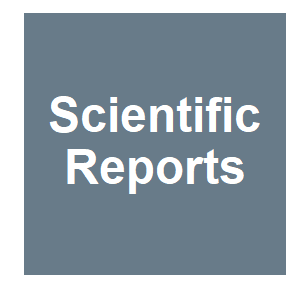
|
Split drive killer-rescue provides a novel threshold-dependent gene driveM. P. Edgington, T. Harvey-Samuel and L. Alphey, Scientific Reports, 10. 2020.
Population genetics mathematical models are developed here to demonstrate the threshold-dependent nature of the proposed system and its robustness to imperfect homing, incomplete penetrance of toxins and transgene fitness costs, each of which are of practical significance given ... Keywords: gene drive synthetic, homing endonuclease, modelling, reversal drive, risk |

|
Split drive killer-rescue provides a novel threshold-dependent gene driveM. P. Edgington, T. Harvey-Samuel and L. Alphey, Scientific Reports, 10:13. 2020.
We show that although end-joining repair mechanisms may cause the system to break down, under certain conditions, it should persist over time scales relevant for genetic control programs. The potential of such a system to provide localised population suppression via sex ratio ... Keywords: gene drive synthetic, homing endonuclease, modelling, reversal drive, risk |

|
Further guidance required for assessment of gene drive technology, says EFSAN. Foote, Euractiv, 2020.
After being mandated by the European Commission, EFSA’s experts on genetically modified organisms (GMOs) published the scientific opinion related to engineered gene drives on Thursday (12 November), specifically focusing on gene drive modified disease-transmitting insects, ... Keywords: gene drive synthetic, homing endonuclease, modelling, reversal drive, risk |
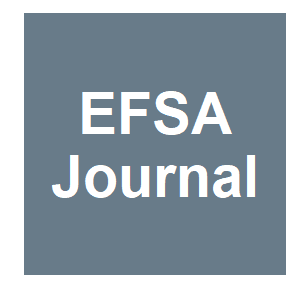
|
Adequacy and sufficiency evaluation of existing EFSA guidelines for the molecular characterisation, environmental risk assessment and post-market environmental monitoring of genetically modified insects containing engineered gene drivesE. Panel o. G. M. Organisms, H. Naegeli, J.-L. Bresson, T. Dalmay, I. C. Dewhurst, M. M. Epstein, P. Guerche, J. Hejatko, F. J. Moreno, E. Mullins, F. Nogué, N. Rostoks, J. J. Sánchez Serrano, G. Savoini, E. Veromann, F. Veronesi, M. B. Bonsall, J. Mumfor, EFSA Journal, 18:e06297. 2020.
As a proactive measure, the European Food Safety Authority (EFSA) has been requested by the European Commission to review whether its previously published guidelines for the risk assessment of genetically modified animals (EFSA, 2012 and 2013), including insects (GMIs), are ... Keywords: gene drive synthetic, homing endonuclease, modelling, reversal drive, risk |

|
EFSA advises on risk assessment of engineered gene drivesEFSA, European Food and Safety Authority, 2020.
EFSA’s existing guidelines for the risk assessment of genetically modified animals are adequate for evaluating risks associated with gene drive modified insects. However, further guidance is needed for some areas, such as molecular characterisation, environmental risk ... Keywords: gene drive synthetic, homing endonuclease, modelling, reversal drive, risk |

|
Modeling CRISPR gene drives for suppression of invasive rodentsS. E. Champer, N. Oakes, R. Sharma, P. García-Díaz, J. Champer and P. W. Messer, bioRxiv, 2020.11.05.369942. 2020.
Here, we develop a high-fidelity model of an island population of invasive rodents that includes three types of suppression gene drive systems. The individual-based model is spatially explicit and allows for overlapping generations and a fluctuating population size. Our model ... Keywords: gene drive synthetic, homing endonuclease, modelling, reversal drive, risk |

|
Dynamics of Wild and Sterile Mosquito Population Models with Delayed ReleasingL. M. Cai, International Journal of Bifurcation and Chaos, 30:15. 2020.
We extend the previous ODE models to the delayed releasing models in two different ways of releasing sterile mosquitos, where both constant and exponentially distributed delays are considered, respectively. By applying the theory and methods of delay differential equations, the ... Keywords: gene drive synthetic, homing endonuclease, modelling, reversal drive, risk |

|
Suppressing evolution in genetically engineered systems through repeated supplementationN. C. Layman, B. M. Tuschhoff, A. J. Basinski, C. H. Remien, J. J. Bull and S. L. Nuismer, Evolutionary Applications, 12. 2020.
Genetically engineered organisms are prone to evolve in response to the engineering. This evolution is often undesirable and can negatively affect the purpose of the engineering. Methods that maintain the stability of engineered genomes are therefore critical to the successful ... Keywords: gene drive synthetic, homing endonuclease, modelling, reversal drive, risk |

|
Incorporating Characteristics of Gene Drive Engineered Ae. aegypti as Methods to Reduce Dengue and Zika Virus into the Bayesian Network – Relative Risk Model, Using Ponce, Puerto Rico as a Case StudyS. R. Eikenbary, WWU Graduate School Collection, 2020.
The Bayesian network relative risk model can perform the risk assessment of gene drive engineered Ae. aegypti for vector control and as part of an adaptive management strategy to reduce dengue and Zika transmission. This study illustrates how the BN-RRM can integrate gene drive ... Keywords: gene drive synthetic, homing endonuclease, modelling, reversal drive, risk |

|
Invasion and maintenance of spore killers in populations of ascomycete fungiI. Martinossi-Allibert, C. Veller, S. L. Ament-Velásquez, A. A. Vogan, C. Rueffler and H. Johannesson, bioRxiv, 2020.04.06.026989. 2020.
We show how ploidy level, rate of selfing, and efficiency of spore killing affect the invasion probability of a driving allele and the conditions for its stable coexistence with the non-driving allele. Our model can be adapted to different fungal life-cycles, and is applied here ... Keywords: gene drive synthetic, homing endonuclease, modelling, reversal drive, risk |
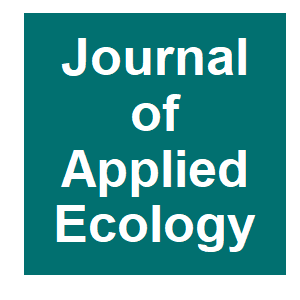
|
Simulating effects of fitness and dispersal on the use of Trojan sex chromosomes for the management of invasive speciesC. C. Day, E. L. Landguth, R. K. Simmons, W. P. Baker, A. R. Whiteley, P. M. Lukacs and A. Bearlin, Journal of Applied Ecology, 2020.
The use of Trojan Y chromosomes (TYC) for controlling invasive species involves manipulating the sex chromosomes of captive-raised individuals. Following release, the offspring of these individuals consist of only one sex, thereby skewing the sex ratio of the invasive population ... Keywords: gene drive synthetic, homing endonuclease, modelling, reversal drive, risk |
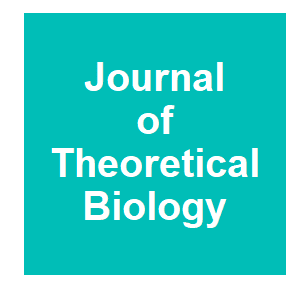
|
Ecological effects on underdominance threshold drives for vector controlD. Khamis, C. El Mouden, K. Kura and M. B. Bonsall, Journal of Theoretical Biology, 456:1-15. 2018.
Here, ecological and epidemiological dynamics are coupled to a model of mosquito genetics to investigate theoretically the impact of different types of underdominance gene drive on disease prevalence. We model systems with two engineered alleles carried either on the same pair ... Keywords: gene drive synthetic, homing endonuclease, modelling, reversal drive, risk |

Contact
David O’Brochta
Foundation for the
National Institutes of Health
geneconvenevi@fnih.org
RSS

